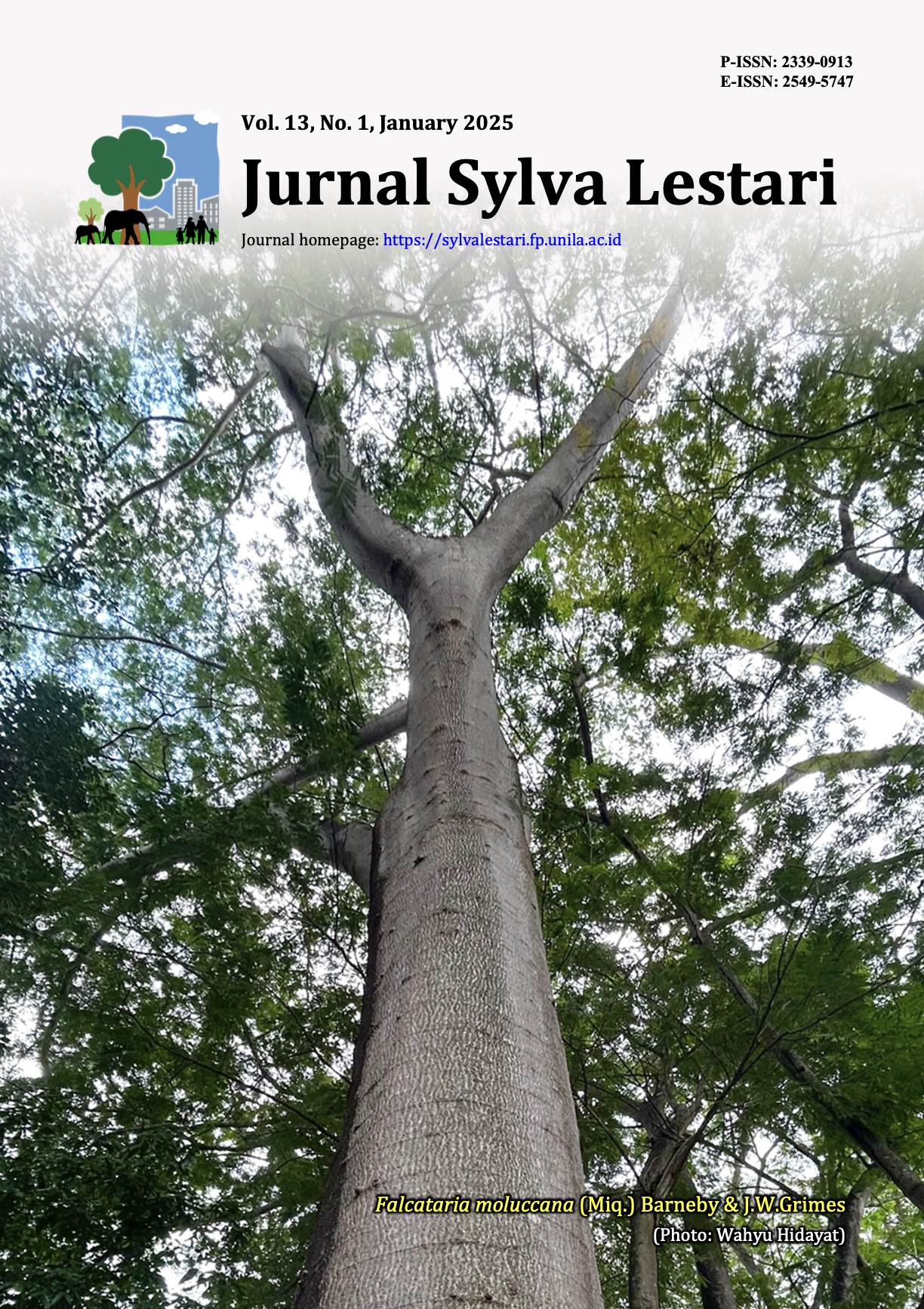Productivity of Cajuput Stands at Various Age Levels in Telawa Forest Management Unit, Central Java, Indonesia
DOI:
https://doi.org/10.23960/jsl.v13i1.1015Abstract
Cajuput (Melaleuca cajuputi Powell) plants are essential oil-producing plants that have ecological and economic benefits. The ideal pruning life is one way to optimize the productivity of cajuput stands. This study aims to analyze the productivity of cajuput stands at various age levels in Telawa Forest Management Unit by considering shoots, stem diameter, shoot diameter, biomass, and land suitability analysis. Data was collected by making three temporary survey plots by simple random sampling at 5, 9, 13, 17, and 21-year-old stands. The results showed that cajuput stands experienced increased productivity, as seen in stem diameter, shoot diameter, and biomass. In addition, the higher the stand density, light intensity, and humidity positively affect the total biomass, with an increase in the life of the stand. Based on the study’s results, the best cajuput productivity occurred at 17-year-old stands, with an average biomass of 1,031.43 kg/ha and an allometric equation of 18.40 kg. The decrease in cajuput productivity occurred at 21-year-old stands, 40% compared to the 17-year-old stands, and the 21-year-old stands have the lowest land index value. Despite the decline in productivity, the main effects still need to be studied over a more extended period.
Keywords: biomass, cajuput, optimal lifespan, productivity
Downloads
Downloads
Published
How to Cite
Issue
Section
Statistics
 Abstract views: 335 times
Abstract views: 335 times PDF downloaded: 375 times
PDF downloaded: 375 times
Metrics
License
Copyright (c) 2025 Alvien Gusti Prasditio, Ana Agustina, Rissa Rahmadwiati, Yus Andhini Bhekti Pertiwi, Rezky Lasekti Wicaksono, Supriyadi

This work is licensed under a Creative Commons Attribution-NonCommercial 4.0 International License.
Authors retain copyright and grant the journal right of first publication with the work simultaneously licensed under a Creative Commons Attribution-NonCommercial 4.0 Licence that allows others to share the work with an acknowledgement of the work's authorship and initial publication in this journal.
Authors are able to enter into separate, additional contractual arrangements for the non-exclusive distribution of the journal's published version of the work (e.g., post it to an institutional repository or publish it in a book), with an acknowledgement of its initial publication in this journal.
Authors are permitted and encouraged to post their work online (e.g., in institutional repositories or on their website) prior to and during the submission process, as it can lead to productive exchanges, as well as earlier and greater citation of published work (See The Effect of Open Access).









